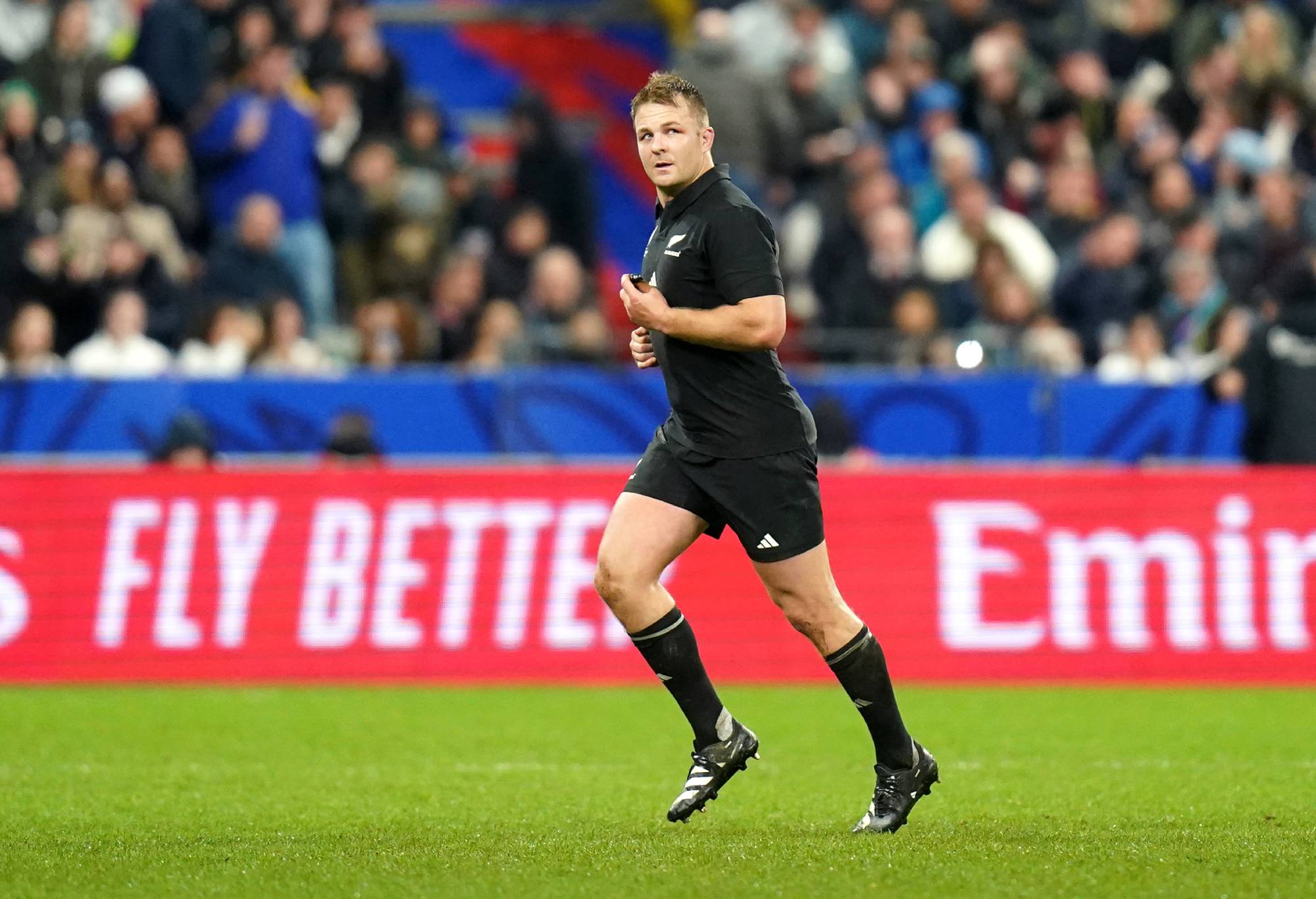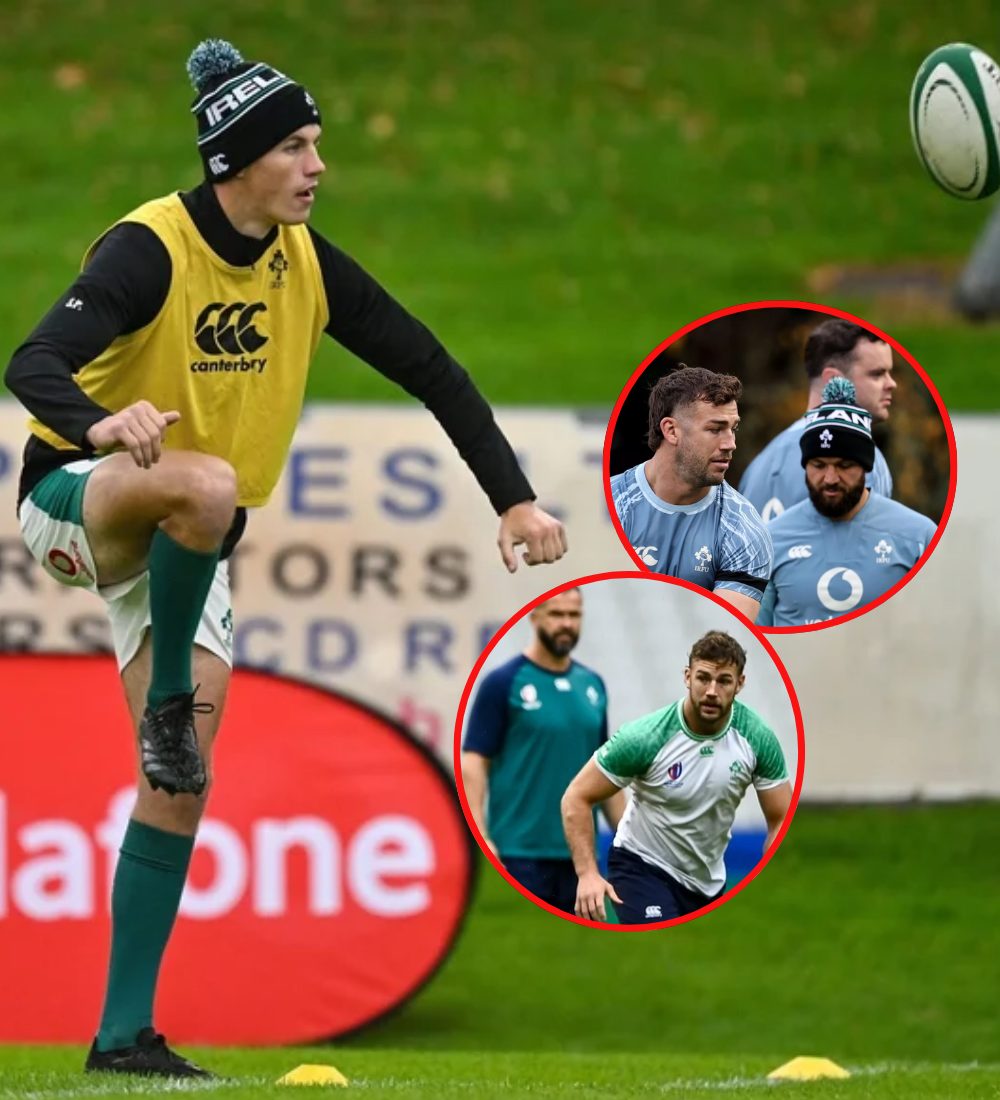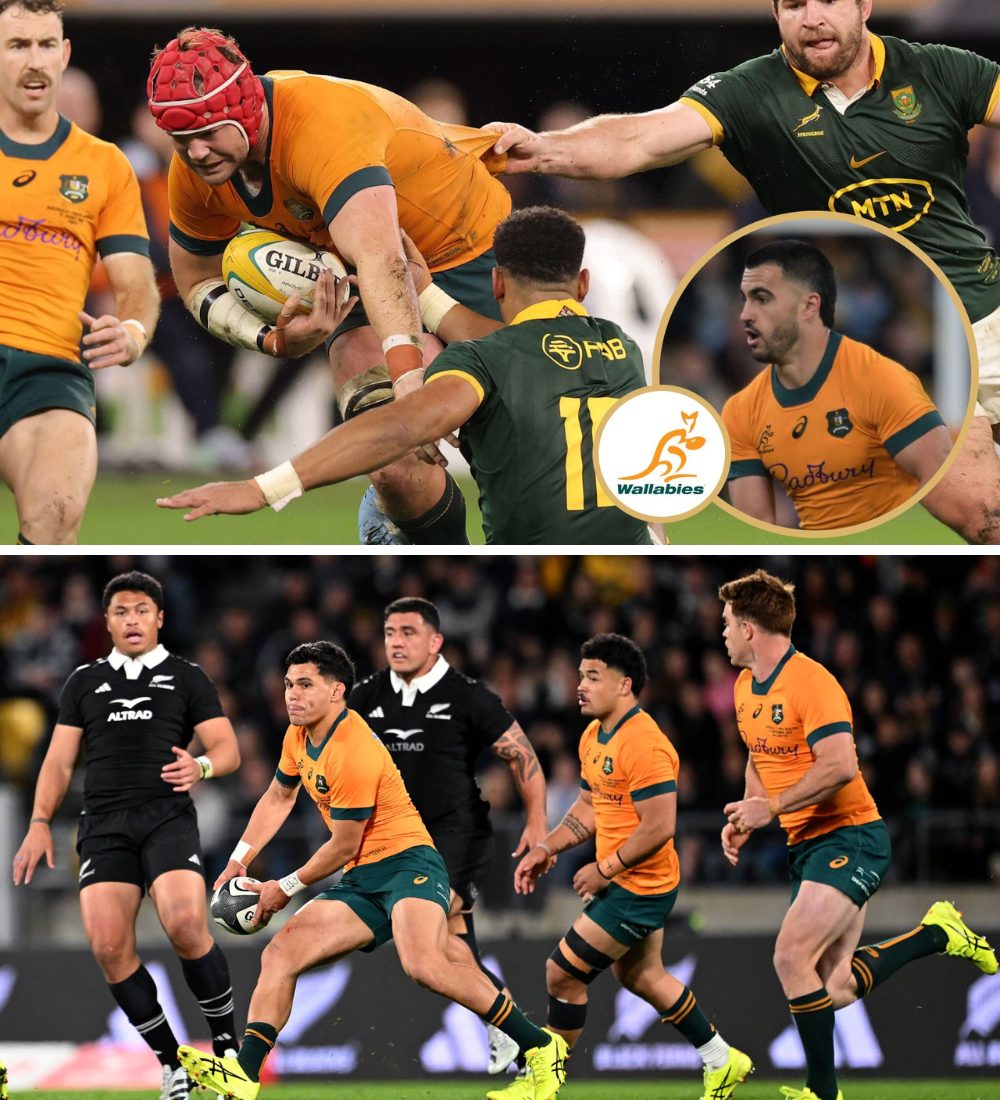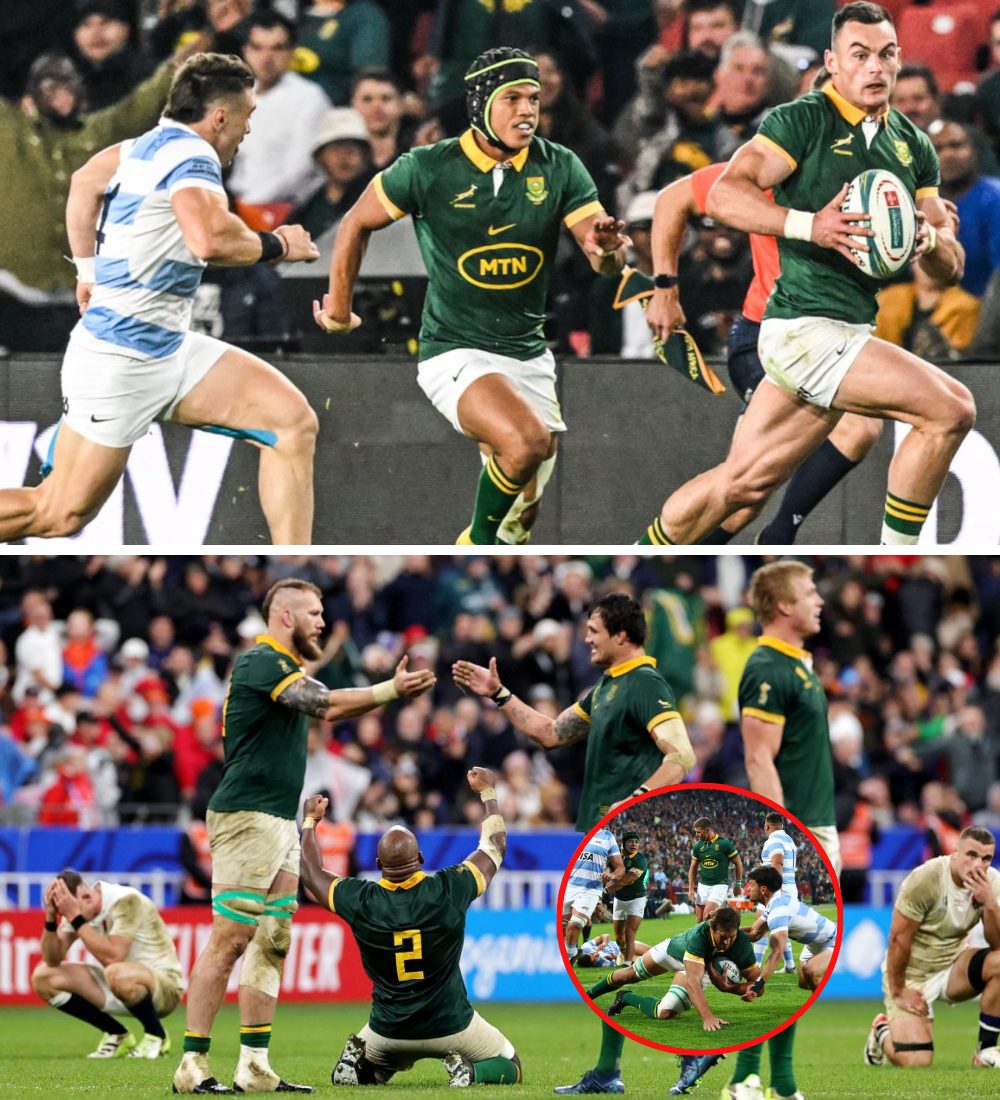Two contributions from match officials in recent days may have gone a long way to help settle what has at times become an acrimonious debate around card sanctions for foul play.
Common ground on the issue has been harder to find than Rocky Elsom when there’s a knock on the front door. With much of the conflict framed along north versus south lines, the contribution of two northern referees – recently retired Wayne Barnes and leading international, Luke Pearce – is potentially helpful.
In a column in The Telegraph, Barnes wrote, “We are asking the players to play at a higher speed than ever before and under more fatigue, and we also ask them not to make mistakes more than ever.”
He then went on to clarify, for audiences not yet accustomed to the 20-minute red card, how it will work: “If a referee decides an incident of foul play is so serious that a red card is required, but decides that the incident was not deliberate or intentional, then the offending player will be permanently removed from the match. But after 20 minutes that player will be replaced, and the team will be back to 15 players.”
Barnes also made it clear that there would be no replacement in cases of deliberate foul play or thuggery (the offending team would remain a player short for the whole match), whilst stating that, in his opinion, these types of events were rare these days.
He was supported by Pearce, appearing on The Rugby Paper Podcast, elaborating on the detail contained in the initiative which, after being in place for the Rugby Championship, is now being trialled in the Autumn internationals, with a view to becoming permanent.
All sorted then? Sorry, but not so fast.
The French and Irish unions have expressed strong opposition to the move, believing it sends the wrong message with respect to player safety. On the other hand, leading administrators, including NZ Rugby CEO Mark Robinson, believe the move is essential to ensure that fans aren’t unduly penalised for what are often unintentional, incidental or accidental actions.

Mark Tele’a scores at the Allianz Stadium in London. (Photo by Warren Little/Getty Images)
Both positions are flawed.
Robinson’s argument is a weak one because there must always be strong disincentives against foul play, and if 15 v 14 is the price to be paid for a serious transgression, any entitlement that fans to maintaining a 15 v 15 contest must be secondary.
On the other side of the argument, opponents of 20-minute red cards don’t want to see any watering down of safety measures, but have not explained how or why this initiative leads to diminished safety outcomes.
Using the example of Sam Cane from last year’s World Cup final, are we to believe that the existence of a 20-minute card would have made Cane more likely to transgress, knowing that he would have spent only 20 minutes on the sideline instead of the whole match? That seems fanciful.

Sam Cane was initially yellow-carded in the 2023 World Cup final. (Photo by Adam Davy/PA Images via Getty Images)
And what about Jesse Kriel, the player who was hit high? In what way might the colour of the card potentially have improved his outcome?
Barnes is right when he says there is a difference between serious foul play with intent, and inadvertent failings in technique and timing, and that it is right for sanctions to better differentiate between the two.
The bigger point to be made though is that this argument is a distinctly different one to the discussion around concussion and player safety.
Head of player welfare at International Rugby Players, Conrad Smith, last week honed in on the futility and irrelevance of the focus on card sanctions, identifying how the point about player safety was being missed.
The concussion issue is wide-reaching and multi-faceted. None of the teeth-gnashing around contact heights and card sanctions addresses the very real concerns with CTE.
How many leagues can make you feel like this? A-Leagues. The Ninja A-League Women season kicks off November 1.
As Smith rightly points out, far more will be done for the wellbeing of players if the game ensures contact time in matches and training is reduced and more tightly regulated and managed.
Way too much has been asked of referees. They are a key part of the system, but player safety in the complex area of brain injury is not their battle to win. The general understanding that has been allowed to develop – that player safety and the solution to concussion issue is all about changing behaviour through card sanctions – is sadly misplaced.
At the heart of the confusion and conflict is World Rugby’s inability to set and control the narrative. A great deal of positive work is going on, but it is evident there is little cohesion across all of the component elements: medical, research, technology development, legal, rugby (shape of the game, laws), officiating, education, past player welfare and communication.
As a result of this not being joined up, spot-fires erupt; for example, the 20-minute red card debate and Michael Cheika being suspended over his objection to concussion protocols, while new stories regularly emerge of players who are suffering post-retirement.

Michael Cheika embraces Marika Koroibete (Photo by Cameron Spencer/Getty Images)
It would be misleading to suggest there is any easy solution when it comes to concussion and CTE. But there is a way to end the chaos and confusion that envelops the issue, and to align everyone involved in the game.
To begin with, there must be a framework established that ensures everyone in the game – including fans – comes to the issue from the point of view, “is it acceptable that as a result of playing rugby, any participant suffers debilitating conditions post retirement or in their later life?”
Not, “is this fair for my team?”
That is the fundamental theme that must be at the core of all action and communication undertaken by World Rugby. And once that is inherently understood, progress can be made in a more cohesive manner than what currently occurs.
This column has called previously for the appointment of a concussion commissioner: a senior, full-time role, designed to tie all of the elements together, navigate the rugby politics, hone a strong, clear message, and ensure that everybody involved in the game inherently understands and appreciates what measures are needed and why, to ensure that the game thrives indefinitely.
Rugby has a great opportunity to position itself as the undisputed leader in contact sports for proactively dealing with the concussion issue.
The NRL might be riding the crest of a wave right now, but it doesn’t take much imagination to understand how rugby can differentiate itself to parents of boys and girls as a far safer sport to play – a sport that genuinely understands the risks and implements credible measures to enhance safety.
The 2027 World Cup is expected to generate £500 million in revenue for World Rugby. The funding is there. Make this somebody’s job. Turn good intent into tangible outcomes.
Closer to home, the latest Shute Shield debacle is a salutary lesson in Economics 101: supply and demand. It’s also a story about entitlement and not learning lessons from the past.
Just because something exists doesn’t mean that, of right, it is worth what its proponents would like it to be worth. That’s a lesson frustrated advocates for the AFLW are learning right now.
It might not be fair that their players are just as committed as the men, train under the strain of having to juggle other jobs and, in some cases 𝘤𝘩𝘪𝘭𝘥ren, and are just as susceptible to injury; but if fans and broadcasters don’t value the product and aren’t prepared to pay for it, that’s the commercial reality.
It’s no different to anyone opening a café or selling a house. The very act of doing so entitles you to nothing. Ultimately you are measured by what somebody is prepared to pay for your product.

Charter Hall Shute Shield (1st Grade) Premiership Grand Final clash between Easts and Norths at Leichhardt Oval, Leichhardt – Saturday 31 August 2024
The Shute Shield was previously broadcast on the Seven Network, but instead of the content provider receiving revenue, the Sydney Rugby Union paid $300,000 per year for the privilege. Rugby Australia was also required to bail out their deal, said to have cost head office $500,000.
In terms of ratings, it has never attracted a meaningful audience. Yet somehow, the Sydney clubs last week decided that a hissy fit was in order, with one club boss reportedly saying that an offer by Rugby Australia to pay each club $40,000 as part of an all-encompassing broadcast deal with Nine and Stan was “insulting” and “not enough to keep our club afloat”.
The same source told The Daily Telegraph that clubs needed greater compensation because TV coverage was hurting their match attendances. The contradiction between that position and the threat to walk away from Rugby Australia’s offer and orchestrate their own TV deal wasn’t explored. But the chutzpah is next level.
With fur flying behind the scenes, the Sydney Rugby Union issued a statement on Friday, clarifying its position. In the time-honoured tradition of such communiques, it dialled down the confrontational language, but clarified absolutely nothing.
As always, this conflict comes back to Australian rugby’s continual inability to agree and settle on a national domestic structure which is logical and coherent, and serves the common good rather than self-interest.
The Shute Shield is a critically important competition. But until the game can agree on who belongs in which lane and which parts of the game are professional and which are amateur, frustration will continue unabated.
It was frustration for England fans as replacement George Ford wasn’t able to convert two late chances, allowing the All Blacks to sneak home 24-22 in a pulsating Test match at Twickenham
This was Test rugby at its very best; imperfect but high pressure-filled and intensely physical. The drama-filled ending was merely the cherry on top.

Ofa Tu’ungafasi celebrates the All Blacks’ victory. (Photo by David Rogers/Getty Images)
Both sides relied on their defence, but in quite different ways. England’s rush and swarm worried New Zealand all match, with halfback Cortez Ratima pushed into indecision, and the All Blacks’ ball runners frequently smashed hard and driven back.
By contrast, New Zealand’s defence was less overtly impactful, but highly efficient. In the end, the All Blacks found a way to score three tries, and with Damian McKenzie drilling the final conversion from the sideline, that deservedly got them the win.
Double try-scorer Mark Tele’a was a standout, as was Wallace Sititi; the young man who looks as if he was 𝐛𝐨𝐫𝐧 to play Test rugby. The ‘tour from hell’ has started well, albeit Scott Robertson will be looking for more midfield cohesion, lineout accuracy and better discipline as they head to Dublin.
England might wonder how they are 0-3 in matches this year against New Zealand. But after starting inventively they probably played a little too much within themselves, and their scrum faltered at vital moments in the final quarter – not the least in not providing a solid platform for Ford on the final play of the game.
Post-match there was plenty of criticism aimed at coach Steve Borthwick for his early substitution of Marcus Smith, with scribe Stuart Barnes insisting that Smith would have nailed the drop goal attempt that Ford missed.
This observation seems to ignore the multiple attempts made by Smith in the first half that failed to get anywhere near the posts.
England move on this week to a match against the Wallabies, which they’ll rightfully be favoured to win. While Australia won’t be helped by the six-week gap since their last match, don’t be surprised if Joe Schmidt has his side in the right shape to give things a real shake.
Finally, another quick reminder that my book ‘A Year in the Life and Death of the Melbourne Rebels’ is now available for order in paperback and e-book format from all major online bookstores, including The Nile, Amazon, Booktopia, Kobo, Waterstones and others.
It’s selling well and please don’t forget that if you do read it and happen to enjoy it, it would be great if you can leave a review or rating on the supplier’s site. Cheers.





